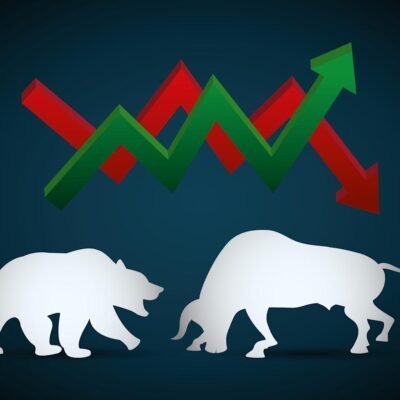Large-blend mutual funds are the foundation of many portfolios. Yet with well over 600 funds and exchange-traded funds to choose from in the category, it can be difficult to find winners.
To screen for the top-performing funds in this category, we looked for those with the best returns over the last one-, three-, and five-year periods. 15 large-blend funds made it through the screen. Nine of the 16 funds are S&P 500 Index funds. Because those funds all follow the same strategy, the analyst commentary will be the same for all of them, and will only be included in the first fund’s description to avoid repetition.
- American Funds Fundamental Investors RFNGX
- American Funds Investment Company of America RICGX
- AQR Large Cap Multi-Style Fund QCERX
- DFA US Large Company Portfolio DFUSX
- Fidelity 500 Index Fund FXAIX
- Invesco MSCI USA ETF PBUS
- Invesco S&P 500 Quality ETF SPHQ
- iShares Core S&P 500 ETF IVV
- JPMorgan Equity Index Fund OGFAX
- Schwab S&P 500 Index Fund SWPPX
- SPDR Portfolio S&P 500 ETF SPLG
- SPDR S&P 500 ETF SPY
- State Street Equity 500 Index II Portfolio SSEYX
- Vanguard 500 Index Fund VFFSX
- Vanguard Mega Cap Index Fund VMCTX
Large-Blend Funds Performance
Over the last 12 months, large-blend funds have returned 8.88%. On an annualized rate, these funds have returned 14.26% over the last three years and 15.06% over the last five. That compares with the Morningstar US Market Index, which has returned 10.83% over the last 12 months, 15.75% per year over the last three years, and 15.91% per year over the last five years.
What Are Large-Blend Funds?
Large-blend portfolios are fairly representative of the overall US stock market in terms of size, growth rates, and price. Stocks in the top 70% of the capitalization of the US equity market are defined as large-cap. The blend style is assigned to portfolios where neither growth nor value characteristics predominate. These portfolios tend to invest across the spectrum of US industries, and owing to their broad exposure, the portfolios’ returns are often similar to those of the S&P 500 Index.
Screening for the Top-Performing Large-Blend Funds
To find the best large-blend funds, we looked at returns data from the past one, three, and five years using data in Morningstar Direct. We screened for open-ended and exchange-traded funds in the top 25% of the category using their lowest-cost primary share classes for those periods. We also filtered for funds with Medalist Ratings of Silver or Gold. We excluded funds with assets under $100 million and analyst coverage that was not 100%. This left 15 funds.
Because the screen was created with the lowest-cost share class for each fund, some may be listed with share classes that are not accessible to individual investors outside of retirement plans, or they may be aimed at institutional investors and require large minimum investments. The individual investor versions of those funds may carry higher fees, reducing returns to shareholders. In addition, Medalist Ratings may differ among the share classes of a fund.
DFA US Large Company Portfolio
- Morningstar Medalist Rating: Gold
- Morningstar Rating: ★★★★
Over the past year, this $12.1 billion fund has gained 11.23%, while the average fund in its category is up 8.88%. The Dimensional fund, launched in September 1999, has climbed 16.11% over the past three years and 16.36% over the past five.
“DFA US Large Company fund offers a well-diversified, market-cap-weighted portfolio of 500 of the largest US stocks. The fund accurately represents the large-cap opportunity set while charging rock-bottom fees, a recipe for success over the long run. The fund tracks the flagship S&P 500, which selects 500 of the largest US stocks—roughly 80% of the US equity market—and weights them by market cap.
“An index committee has discretion over selecting companies that meet certain liquidity and profitability standards. While a committee-based approach may lack clarity, it adds flexibility to reduce unnecessary changes during reconstitution, taming transaction costs compared with more rigid rules-based indexes.
“The end portfolio is well-diversified and accurately represents the US large-cap opportunity set. This allows the strategy to capitalize on its low fee and closely track the performance of the large-cap market.
“The bedrock of this strategy is market-cap weighting, which harnesses the market’s collective wisdom on the relative value of each holding with the added benefit of low turnover and associated trading costs. It’s a sensible approach because the market tends to do a good job pricing large-cap stocks.
“Large, highly traded markets tend to reflect new information quickly and are well suited for indexing. When a few richly valued companies or sectors power most of the market gains, market-cap weighting may expose the strategy to stock- or sector-level concentration risk. As of year-end 2024, the top 10 holdings made up the largest portion of the index (37%) in several decades, and the 34% allocation to technology stocks was the highest since the dot-com bubble. But this is not a fault in design. The S&P 500 simply reflects the market composition.
“In the long run, its broad diversification, low turnover, and low fee outweigh these risks.”
—Brendan McCann, associate analyst
Fidelity 500 Index Fund
- Morningstar Medalist Rating: Gold
- Morningstar Rating: ★★★★★
The $594 billion fund has climbed 11.29% over the past year, outperforming the average fund in its category, which rose 8.88%. The Fidelity fund, launched in May 2011, has climbed 16.18% over the past three years and 16.41% over the past five.
iShares Core S&P 500 ETF
- Morningstar Medalist Rating: Gold
- Morningstar Rating: ★★★★★
Over the past year, the $577.1 billion fund has gained 11.27%, while the average fund in its category is up 8.88%. The iShares fund, launched in May 2000, has climbed 16.16% over the past three years and 16.39% over the past five.
JPMorgan Equity Index Fund
- Morningstar Medalist Rating: Silver
- Morningstar Rating: ★★★★
Over the past year, the $11.1 billion fund has gained 11.27%, while the average fund in its category is up 8.88%. The JPMorgan fund, launched in September 2016, has climbed 16.13% over the past three years and 16.37% over the past five.
Schwab S&P 500 Index Fund
- Morningstar Medalist Rating: Gold
- Morningstar Rating: ★★★★★
Over the past year, the $110.6 billion Schwab S&P 500 Index Fund rose 11.27%, while the average fund in its category rose 8.88%. The Charles Schwab fund, launched in May 1997, has climbed 16.15% over the past three years and gained 16.39% over the past five years.
SPDR Portfolio S&P 500 ETF
- Morningstar Medalist Rating: Gold
- Morningstar Rating: ★★★★
Over the past year, the $66.7 billion fund has gained 11.29%, while the average fund in its category is up 8.88%. The State Street fund, launched in November 2005, has climbed 16.15% over the past three years and 16.40% over the past five.
SPDR S&P 500 ETF
- Morningstar Medalist Rating: Silver
- Morningstar Rating: ★★★★
Over the past year, the $598.1 billion SPDR S&P 500 ETF rose 11.20%, while the average fund in its category rose 8.88%. The State Street fund, launched in January 1993, has climbed 16.08% over the past three years and 16.32% over the past five.
State Street Equity 500 Index II Portfolio
- Morningstar Medalist Rating: Gold
- Morningstar Rating: ★★★★★
Over the past year, the $17.8 billion fund has gained 11.26%, while the average fund in its category is up 8.88%. The State Street fund, launched in August 2014, has climbed 16.14% over the past three years and 16.34% over the past five.
Vanguard 500 Index Fund
- Morningstar Medalist Rating: Gold
- Morningstar Rating: ★★★★
This $1.3 trillion fund has climbed 11.30% over the past year, outperforming the average fund in its category, which rose 8.88%. The Vanguard fund, launched in June 2016, has climbed 16.18% over the past three years and 16.42% over the past five.
American Funds Fundamental Investors
- Morningstar Medalist Rating: Silver
- Morningstar Rating: ★★★★
Over the past year, this $142.3 billion fund has gained 12.01%, while the average fund in its category is up 8.88%. The American Funds fund, launched in May 2009, has climbed 17.27% over the past three years and 16.32% over the past five.
“American Funds Fundamental Investors’ flexible growth-and-income approach allows its seasoned management team to play to their strengths, making it a solid option at the right price for investors who understand what is under the hood.
“American Funds offers three large-blend mutual fund strategies, and this strategy’s flexible mandate has often made it the most aggressive. The managers aren’t afraid to stand out from the S&P 500, and their ability to invest abroad is possibly its biggest differentiator. The managers try to limit their non-US investments to companies that have no solid equivalent US option.
“After a stint of manager changes, this strategy should be set up well going forward. Since 2020, three managers retired, and the firm publicly disclosed five managers. [In 2024] Mark Casey took over as leader of the strategy from Brady Enright, who remains the head of the Capital World Investors, or CWI, team. Casey has served as Capital International Investors, or CII, leader since 2018. While most of the eight named managers are veterans, they likely still have ample runway before potential retirements. This should bode well for more team stability going forward.
“With its key attributes intact, this strategy has a good shot to rebound from its recent middling performance.”
—Stephen Welch, senior analyst
American Funds Investment Company of America
- Morningstar Medalist Rating: Silver
- Morningstar Rating: ★★★★★
The $154.4 billion fund has climbed 14.12% over the past year, outperforming the average fund in its category, which rose 8.88%. The American Funds fund, launched in May 2009, has climbed 18.62% over the past three years and 17.04% over the past five.
“This strategy is supported by a capable management team with robust analytical support. Soon eight managers will helm this strategy. Firm veterans Martin Romo and Grant Cambridge oversee allocating capital to the individual managers. While experienced manager James Terrile will step off the strategy and retire from the firm June 1, 2025, veterans James Lovelace, Martin Jacobs, and Chris Buchbinder remain. Additionally, newer managers Jessica Spaly and Aline Avzaradel have more than two decades of industry experience each. Last year, the firm added up-and-comer Greg Miliotes to the management team. He has 18 years of experience at the firm. The managers are supported by a deep research team of more than 100 analysts.
“The strategy’s move away from a higher income target came at a poor time as 2022 rewarded high-dividend-yielding stocks relative to growth stocks, yet the strategy still held up better than the index, showing it didn’t stray too far from its roots.
“As growth bounced back in 2023 and 2024, the strategy outperformed the index, landing in the top quintile of its Morningstar Category in both years. It had strong picks in several sectors like Meta Platforms, Broadcom, and GE Aerospace. What’s more, as valuation has been more important in 2025’s first quarter, the strategy still held up better than the index and the typical peer.”
AQR Large Cap Multi-Style Fund
- Morningstar Medalist Rating: Silver
- Morningstar Rating: ★★★
Over the past year, the $1.1 billion AQR Large Cap Multi-Style Fund rose 11.83%, while the average fund in its category rose 8.88%. The AQR fund, launched in July 2014, has climbed 16.33% over the past three years and 17.24% over the past five.
“AQR Large Cap Multi-Style mimics the market’s risk profile, avoids sector- and stock-specific bets, and charges a low fee, all considerations that should help it beat its Morningstar Category benchmark long term. This rules-based strategy targets large- and mid-cap firms with strong value, momentum, and quality characteristics. Each receives a composite factor score, where value and momentum (40% weight apiece) weigh more than quality (20%).
“The fund favors stocks with the best combination of these traits, rather than those that thrive in one area but lack in others. This integrated approach helps it balance all three factors, each of which has historically been tied to market-beating performance. Targeting this factor trio promotes diversification.
“Payoffs to momentum and quality tend to be negatively correlated with the value factor and weakly correlated with each other. So, when one of the more heavily weighted factors slumps, like value did in 2024, the other can shoulder the load. Pinning stock and sector weights to the Russell 1000 Index aids diversification as well. It also ensures that the target factors steer returns—not incidental sector or stock-specific bets that lack a reliable resumé.
“This strategy aims to beat the broad market, not destroy it. It shoots for the same market sensitivity as the Russell 1000 Index and a 2.5%-3.0% tracking error against that bogy. The fund takes enough risk to recoup its fee, but it shouldn’t substantially out- or underperform the broad market benchmark over a long horizon. AQR’s portfolio management team trades only when it sees efficient opportunities, so trading costs shouldn’t shave too much off total returns. That is key because the fund’s momentum component forces more trading than most rules-based strategies.”
—Ryan Jackson, senior analyst
Invesco MSCI USA ETF
- Morningstar Medalist Rating: Silver
- Morningstar Rating: ★★★★
Over the past year, the $6.9 billion Invesco MSCI USA ETF rose 11.53%, while the average fund in its category rose 8.88%. The Invesco fund, launched in September 2017, has climbed 16.29% over the past three years and 16.28% over the past five.
Invesco S&P 500 Quality ETF
- Morningstar Medalist Rating: Silver
- Morningstar Rating: ★★★★★
Over the past year, the $13.4 billion Invesco S&P 500 Quality ETF rose 14.63%, while the average fund in its category rose 8.88%. The Invesco fund, launched in December 2005, has climbed 18.24% over the past three years and 16.98% over the past five.
“Invesco S&P 500 Quality ETF builds a portfolio of profitable industry leaders with solid balance sheets. High-quality companies won’t always be in favor, but targeting leaders while charging a low fee should help it outperform the Russell 1000 Index over the long haul.
“This exchange-traded fund tracks the S&P 500 Quality Index, which sweeps in high-quality stocks from the S&P 500. S&P’s quality score favors stable, profitable companies over those that rely on debt financing or aggressively grow their assets. The index ranks all S&P 500 constituents by their quality score and picks the highest-ranking 100. It weights selected holdings by the product of their market cap and their quality score.
“The companies featured in its lineup tend to be established businesses with strong and stable cash flows. However, this strategy doesn’t take valuations into consideration. This could limit its upside potential as high-quality stocks tend to fetch premium price multiples. Indeed, the fund’s price/book ratio has historically been higher than the category index’s. While its index has buffer rules that allow stocks to temporarily deviate from its initial inclusion criteria, the fund’s annual turnover still ranges between 40% and 70%. High turnover can increase trading costs and detract from performance.
“This fund’s narrow 100-stock portfolio means that it also tends to be top-heavy. It typically invests around 40% of its assets in its top 10 holdings, despite caps on individual positions meant to promote diversification.
“In aggregate, investors can expect a portfolio with a slight growth tilt, strong return on invested capital, low debt, and solid earnings growth.”
—Bryan Armour, director
Vanguard Mega Cap Index Fund
- Morningstar Medalist Rating: Silver
- Morningstar Rating: ★★★★★
The $6.4 billion fund has climbed 12.13% over the past year, outperforming the average fund in its category, which rose 8.88%. The Vanguard fund, launched in February 2008, has climbed 17.61% over the past three years and 16.83% over the past five.
“Vanguard Mega Cap holds the largest US stocks and charges minuscule fees, making it a solid choice for US large-cap investors. The fund replicates the CRSP US Mega Cap Index, which captures the largest 70% of the US stock market. The portfolio weights stocks by market cap, which makes sense for a large-blend fund.
“Since the portfolio only holds large-cap stocks, it’s not as diversified as other index funds that hold mid- and small-cap stocks. However, its 190 stock holdings still outnumbered its average category peers by 50 stocks as of March 2025. Likewise, the portfolio holds slightly less in its top 10 holdings, stowing 40% compared with the category average of 51%. The fund’s concentration has increased in recent years, but that’s indicative of the overall US stock market, not a fault in design. The fund holdings’ average market cap ranked as one of the highest in the large-blend category, but it looks like its average peer along other dimensions.
“The exchange-traded fund share class outperformed its average peer by 2.81 percentage points over the 10 years through March 2025. The fund holds little cash, which should help it outperform cash-saddled peers during market rallies but hurt when the stock market declines.”
This article was generated with the help of automation and reviewed by Morningstar editors.
Learn more about Morningstar’s use of automation.





